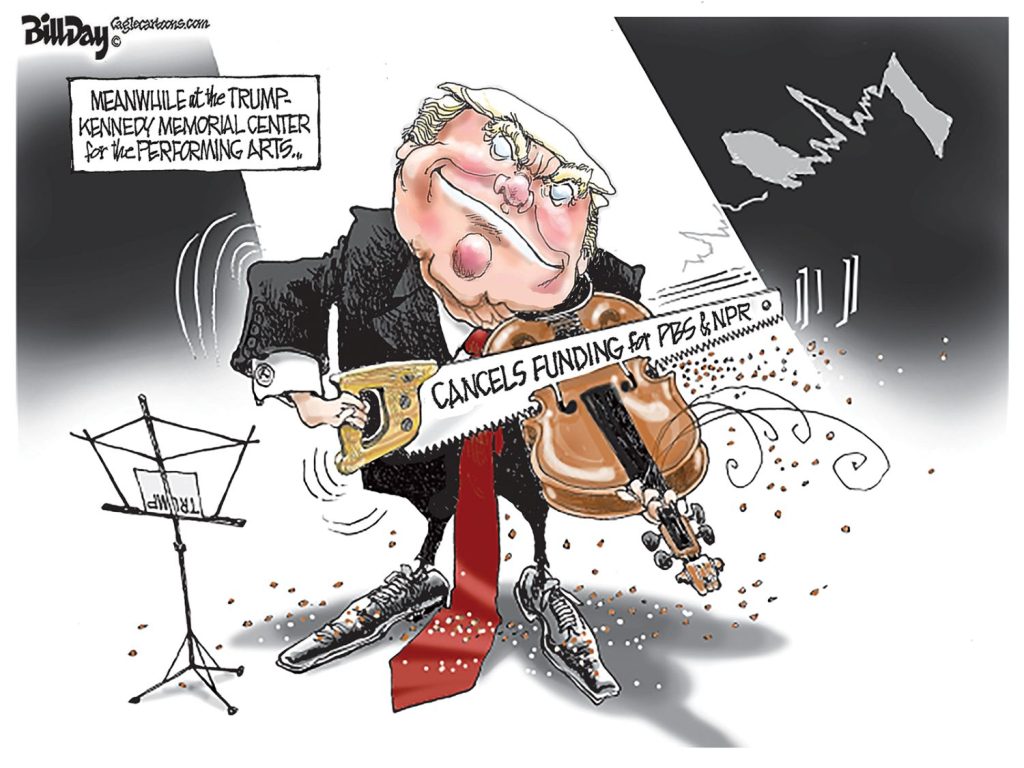This is the second post about the issue of Memphis tax inequity. The first part was published in the previous post.
Effectively addressing the serious issues facing Memphis is complicated by the absence of a coherent philosophy of public financing. Perhaps, it’s finally time for a fiscal equity study that becomes the blueprint for a taxing philosophy for our community that is sound, equitable, and logical.
In Shelby County, population movement has resulted in shifting revenue and expenditure patterns, and because of this, the questions that need definitive answers are:
1) Who pays?
2) Who benefits?
3) What is the most equitable philosophy of funding public services?
Disparity
The overwhelming majority of citizens in Shelby County pays taxes to a municipality, and every one pays taxes to county government. It is the disparity between county services paid for and county services received that create inequities for Memphis taxpayers.
At the heart of the problem is the lack of coherency in county tax policies. Shelby County’s rationale for service delivery is – and has been for 20 years – schizophrenic and confusing to the people who pay its costs. For example, county government delivers some services countywide, such as public health and criminal justice.
For some small cities, it provides fire protection and law enforcement. In others, it provides ambulance service. Outside of Memphis, Shelby County Government pays the total cost of education and the towns pay nothing. Outside of Memphis, Shelby County enters into partnerships with small cities to help fund road projects.
Getting the Questions Right
In other words, the current system lacks consistency and congruity. As a result, what is at issue is the fiscal equity achieved by the type, the quantity, and the location of county services. To determine what is fiscally equitable, an analysis is needed to answer two questions:
1) Are municipal and non-municipal taxpayers receiving their fair shares of existing county and municipal services?
2) What levels of service delivery to incorporated and unincorporated areas should Shelby County assume in order to best serve its citizens?
To get at these answers, a fiscal equity study should determine the fiscal power of the county and its cities, determine the fiscal capacity of the county and its cities, determine the fiscal demands of the county and its cities, determine the relationship between capacity and demands, determine the precise source of revenues and expenditures, determine the organization and content of ongoing policy analyses which find the most equitable and cost effective way to control funding of public projects and services, prepare case studies of comparable urban/suburban areas, and examine the relationships between county and municipal governments.
Rational Thinking
At the end of this process, for the first time in history, there could be a rational framework for what is municipal and what is regional (county). In turn, what is considered regional should be moved to the county tax base. Everything else should be left for individual cities to fund.
A fiscal equity program would likely shift many services that are now considered Memphis services to the regional tax base (Shelby County’s), and in this way, a major goal for this community would be accomplished — to lower the city’s tax rate to be more commensurate with the other municipalities of Shelby County.
That seems only fair.
Answers Please
And while we’re asking, we’d like to consider how the answers to these questions factor into a coherent tax policy:
– the proportion of the county tax base, for the past 20 years, that is within Memphis city limits and within the city’s annexation reserve area.
– the proportion of the county tax base that is paid by Memphis taxpayers from all residential, commercial and industrial sources
– the amount of county tax dollars that was spent over the past 20 years on capital projects supporting suburban development in the area outside of Memphis, including money spent on roads, schools, drainage, paving, traffic signals, parks, landfills, etc.
Better Data– the proportion of the operating budget and capital budget of Shelby County spent in the past 20 years on the expansion of the sheriff’s department to serve the suburbs, ambulance service to some towns and unincorporated Shelby County, fire services, etc.
– the proportion of the operating budget and special services such as elections, Agricultural Extension, Soil Conservation Service, Shelby County police, office buildings, information technology, etc., that is paid by Memphis taxpayers.
– the total of 50-50 city-county funded projects for the past 25 years, such as The Pyramid, AutoZone Park, FedEx Forum, Memphis Cook Convention Center, Memphis/Shelby County Health Department, etc., to determine the actual overall percentage paid by Memphis taxpayers.
It’s Time
– examine revenues and expenditures of joint city-county agencies administered by Shelby County, such as Construction Codes Enforcement, to determine how much of the revenues are generated within Memphis and how much of the revenue is actually spent on city needs
In 2001, the so-called “tiny town” controversy gave our community its best chance for addressing the tax inequities implicit in the current tax system. Being negotiated at that time was a proposal to move libraries, museums, economic development agencies, most joint agencies and more to the county’s tax base. Regrettably, the political pressure eased up, and the agreement was never consummated.
That does not mean that it is any less needed.





I have railed about many of these inequities for a long time. As a City resident, I know we are paying too high a tax rate and it was the major reason I voted for consolidation.
Seven of the 13 County commissioners represent districts totally within Memphis. Three others have districts primarily in the City.
So why has nothing even modestly been done to rectify this problem?
“I have railed about many of these inequities for a long time. As a City resident, I know we are paying too high a tax rate and it was the major reason I voted for consolidation.”
I’d like to know if Smart City Memphis thinks consolidation would have helped in this regard.
The point-counter point battle between Jim Rout and WW Herenton that raged at the time of the “tiny town” episode was Herenton’s finest hour. His testimony before the County Commission, Chancery Court in Nashville, and the joint Senate/House task force was brilliant. The result was landmark legislation that received national applause. He defended Memphis in a rational, intelligent manner; and he clearly spelled out the inequities that existed between Memphis and the rest of the County. Press coverage of his testimony did not do justice to Herenton’s understanding of the issues; and his advocacy of consolidation was based on this deep understanding.
I, like many others, became a Herenton critic over his final years, but for one brief shining moment he was our greatest Mayor.
Anon 5:22 makes a good point. Why hasn’t the County Commission taken the lead to create fiscal equity over the entire County.
The reason consolidation failed resides in the conclusion of the suburban cities and all the elected officials outside of Memphis that taxes would go up for them if equity was achieved. Even though consolidation would have resulted in the same fiscal structure for Memphis (urban services district) and Shelby County (general services district), those outside of Memphis saw a future with taxes shifted up to the general services district (Shelby County). The irony is that the tax shift will probably happen anyway, and we will still have a two headed monster to appease.
And don’t give me any jive about Memphis having more prisoners in the County jail, which should result in higher taxes for Memphis.
I’ve looked at the evidence, and it doesn’t support the idea that having a non-consolidated gov is a wasetful “two headed monster”. The actual evidence indicates that it (consolidated gov) usually costs slightly more, and inner city residents sometimes/usually get screwed the worst.
That said, I think our current tax situation is an abomination and horribly injust. I’m all for calling it out for the evil that it is. It’s wrong – flat out. It needs to be fixed. I just implore “you” to lay aside the usual tools of dishonesty, trickery, bad science, etc.
Jupiter-
How exactly to you justify paying the salaries of two mayors who preside over governmental bodies who provide overlapping services and representation? Please show us your evidence, complete with citations and calculations, showing that a dual government is in fact more efficient than a single government.
Please excuse my misuse of words and poor grammar in my earlier post. Sometimes I should save the written word until the first dose of caffeine has the opportunity to take effect.
Jupiter,
The main thing needed for tax equity is single source funding, by the County, of public schools. Consolidation would have done that.
However, now that that’s a non issue for now, we should now go forward with piecemeal consolidation and I wonder why the county commission hasn’t done anything about it, now that City oriented commissioners are a majoority.
The mayor is trying to shore up some loose ends but I don’t think it’s going to be anywhere near enough in the long run, and I wouldn’t wait if I was the county to start cooperating. Look at how many people were just thrown out of heir houses, inflation is coming and that along with fuel price spikes will finish of double what just happened.
How much sympathy do you think the citizens are going to have for a government (made up of people who live here) that does not get the extent to which the citizens are suffering?
The shell game for denial of services has to stop. Deliver the services, or stop charging for them. Seems simple to me.
Here’s where it all fails:
#1 There are no set standards as to whether services are being #2 delivered. They don’t know if they are being delivered, or, if they aren’t until either a national media expose’, or, FBI inquiries start, or complete collapse happens. How stupid is that?
#3 They have no way to measure if they are being delivered properly and appropriately with any quality whatsoever.
#4 They have no way to correct abhorrent failure in their delivery.
#5 And from this discussion all those things seem to be the last thing they’d ever consider, which points to a total lack of sincerity in finding solutions, anyway so I have zero reason to believe anything will change.
If it doesn’t change to 100% accountability, considering the full amount of budgets here, Memphis will have to be a privately funded city, and the odds of that are…nil.
Running out of money will make you a believer as much as money becoming worthless.
“I have railed about many of these inequities for a long time. As a City resident, I know we are paying too high a tax rate and it was the major reason I voted for consolidation.”
“I’d like to know if Smart City Memphis thinks consolidation would have helped in this regard.”
Sorry, Jupiter, we didn’t see your question earlier. Yes, we think that consolidation would have reduced costs and taxes. In a comparison with Louisville, Jacksonville and Nashville, Memphis/Shelby County was spending an average of $400 per capita to deliver services, which equated to several hundred million dollars. So if we were only able to do half as good as the other cities, we would reduce costs by about $250M which is about a $2 tax decrease.
Chuck: Great point about Herenton’s shining hour. At that moment, so many of us were so optimistic about what the future would be. But in its way, it fed his me against the world syndrome and helped to drive him more within himself and within a small group of trusted advisers. It’s sad story as a result, because now, no one remembers the first half of his time in office when he was everything we wanted in a mayor.